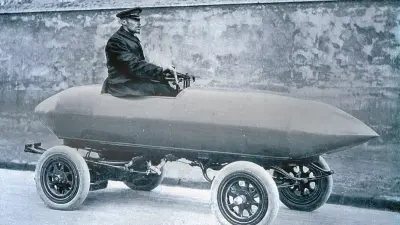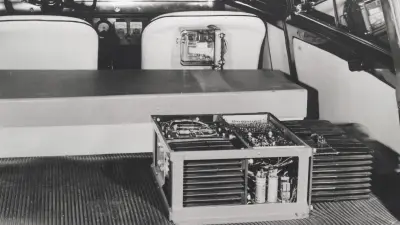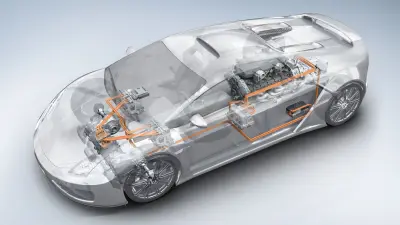Electric Mobility: A project with a past and a future

Around 1900, electric motors and internal-combustion engines were still equally popular in automobiles.
Particularly in the United States, the smooth electric powertrain was more prevalent in urban traffic, while the internal-combustion engine was the preferred choice in rural areas thanks to its greater range. An electrically powered vehicle was also the first to break the 100 kilometer-per-hour barrier. On April 29, 1899, Camille Jenatzy reached a top speed of 105.882 kilometers per hour in the vehicle named “La Jamais Contente”.

“Electromobile” research project

At Bosch, the history of automotive electric motors dates back to the 1960s. Even then, the idea was to find an alternative system that would produce lower emissions than the internal-combustion engine. Proposals for high-performance batteries that could store far more energy than the conventional lead batteries of that era formed the main catalyst for the intensive research this field.
For their first project, the engineers replaced the spark-ignition engine and transmission of a standard vehicle with a Bosch electric motor. Thanks to an electronic control, the motor could also be run as a generator, and thus recover braking energy.
In October 1974, seven electric buses were put into passenger service in Mönchengladbach for a large-scale field test. Bosch provided the electric motors, electronic control units, and auxiliary systems. Weighing six metric tons, the battery was transported separately on a special single-axle trailer. It had a range of 80 kilometers and was regularly exchanged every two hours at a special station. Changing the battery was fully automatic, and took just under five minutes.
Hybrid Technology
One year previously, at the 1973 IAA motor show, Bosch had presented a development report on a hybrid-drive passenger car fitted with both an internal-combustion engine and an electric motor. Up to that point, the batteries of most hybrid vehicles had been charged by a generator powered by an internal-combustion engine. The novelty in the Bosch project was the use of the internal-combustion engine to both charge the battery and drive the vehicle, meaning it used far less energy overall.
Despite such groundbreaking research results, these developments still did not get beyond the project stage. Insufficient battery power remained the major hurdle. All the same, the research work continued. During the 1980s and 1990s, Bosch worked together with automakers on numerous studies and prototypes of hybrid and electric powertrains.

Production projects
The first production cars to use Bosch hybrid technology were the VW Touareg and the Porsche Cayenne, launched in 2010. They were also the world’s first parallel full hybrids. In 2013, Bosch supplied the electric drive for the first time as a complete system solution for the Fiat 500e.
For battery-electric vehicles, Bosch today offers all-in-one solutions or custom, preintegrated modules – from Silicon carbide semiconductors for maximum efficiency to components such as power electronics, e-machines, and drive units in the form of eAxles.
Fuel cell-electric drives will also play a role in the mobility of the future, especially in long-distance traffic.
Author: Bettina Simon
